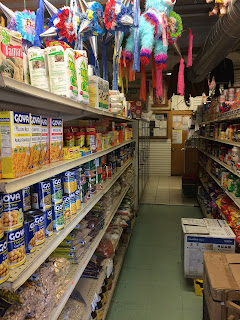The best way to arrive at Restaurant De Lindenhof is by boat. After ducking under 100-year-old wooden bridges and shimmering willow trees, you’ll glide down a narrow canal flanked by purple lupine. A rose-cheeked, blonde cook may greet you, taking the ropes from the bow as you step on a small dock – the waterside entrance to an expansive garden several yards from the restaurant’s kitchen.
The quaint scene, guaranteed to impress a visiting American, wasn’t new to my hosts. Mas and Jacquline Boom own a small home nearby, where I stayed with their daughter and my good friend, Laurentine. The three had planned a surprise lunch at De Lindenhof - a Michelin two-star restaurant on the outskirts of a small canal village in Northern Holland.
“Quite the garden, yes?” Mas said, striding from the dock past a noisy chicken coop. He watched as I stood in awe of blackberry brambles and dill weed growing as tall as the Dutch. Up ahead, the aproned cook stooped in front of a bed of blooming rocket, dwarfing the delicate blossoms as he pinched them between his fingers.
The Boom family and I followed his garnish harvest through the restaurant’s back door, briefly touring the kitchen before gathering around a table in the bright dining room. Before “lunch” arrived, we tasted salmon wrapped in a wakame cone with lemon dill cream; cold soup of bouillon, cucumber, mint and wasabi; and snow peas dotted with smoked eel and hazelnut cream.
The onslaught of amuse bouches made us giddy, except for the last one, to which Laurentine scrunched her nose. “I’ve never really liked eel,” she said. But it was deeply smoky and brightened by the fresh pea an she took another bite.
“A child doesn’t like fish, doesn’t like some vegetable, you bring them to this restaurant,” Mas declared, slathering a roll with deep yellow butter. “First of all, they are spoiled; second, they like everything.”
Mas is usually eating lunch at the office canteen with the employees of Boom Publishing. He opts for a sandwich of ham, cheese, boiled egg, lettuce and tomato along with a glass of karnemelk (cultured buttermilk). He also likes the vegetable soup, “… with meatballs,” he grins. If it’s up to him, Elvis or Crosby Stills and Nash plays on the canteen Jukebox. (Author’s note: Mas recently retired from Boom Publishing.)
Jacqueline’s favorite amuse arrived at the table, served by Lindenhof co-owner Marjan de Jonge: an oven roasted cherry tomato encased in a crispy, sesame shell served atop a scoop of light ginger sorbet. It’s like eating fresh jian dui dipped in ice cream.
Jacqueline works from her office at home. For lunch? “To be honest, I usually forget.” When she gets hungry around 4pm she might head down to the kitchen and make a tosti. She likes brown bread with aged gouda (what the Dutch simply call ‘old cheese’) and sliced pickled ginger or mandarin orange. It’s her take on the more traditional Dutch Tosti Hawaii – a grilled sandwich with ham, cheese and pineapple.
“I refuse to bring a sandwich for lunch,” said Laurentine, who’s finishing her last clinical rotation in med school. Most doctors pack a bag with 4 cheese sandwiches, which they keep in their white coats, she says. “There’s no time – while they walk from one part of the hospital to another, you see them stuffing their faces.”
Laurentine’s non-sandwich strategy is this: early in the morning she scopes out a fridge in the hospital where she can stash a 450 ml container of skyr. Later in the day she’ll dash in and spoon down the thing, sometimes with a bit of granola, often unaccompanied.
But today we ate perch wrapped in blanched swiss chard in a sauce of beetroot, and shaved pumpkin dumplings filled with langoustine. The bread was scented with lavender from the garden, the butter deep yellow, the olive oil verdant in a small glass bottle on the table. Our desserts came in threes: peach, rose, and raspberry; dill, cucumber and yogurt; hazelnut, chocolate and coffee.
Nearly four hours later, as the cooks prepped for dinner, we shoved off from the dock, sleepy and enchanted.













